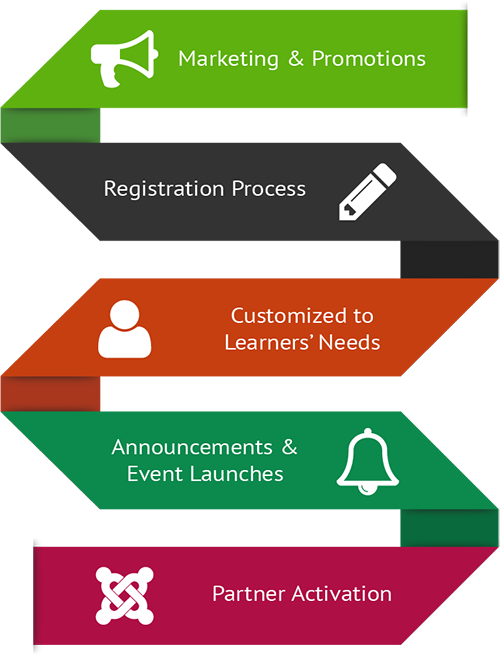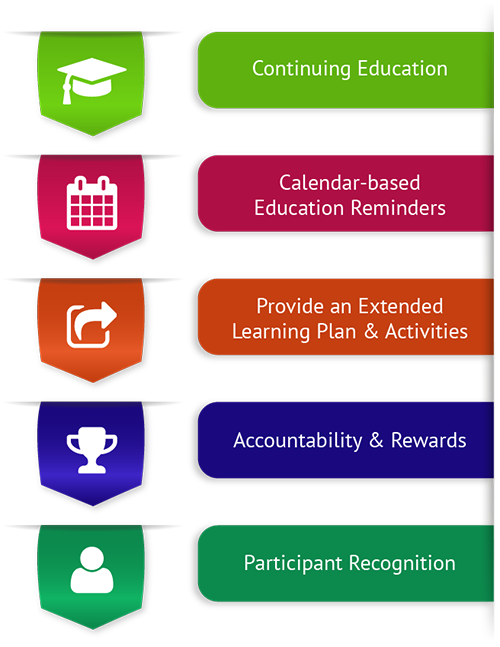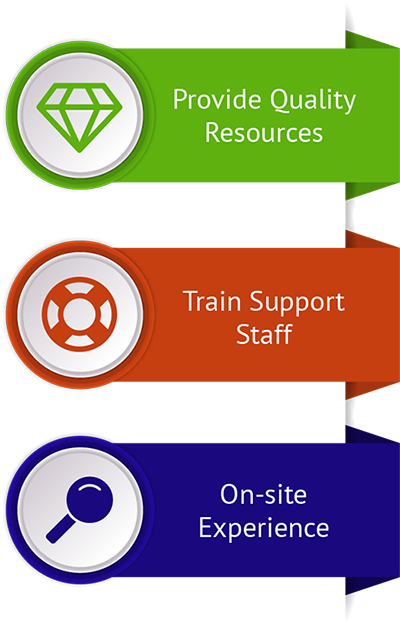Get People to Rave About Your Financial Literacy Program: 3 Touchpoint Framework to Create a Positive User Experience
A financial education program that creates a positive learner experience can make a program stand out. Building a positive experience not only benefits the participants and makes a measurable difference in their outcomes, but can also position you as a quality provider of financial education programming.
The goal is to create a positive first impression, showcase professionalism during the actual program, and continue to support participants indefinitely with quality ongoing education. Focusing your efforts on ensuring a positive user experience along the three main touchpoints – pre-programming, implementation, and post-programming – is an important aspect to include in the program design.
3 Key Touchpoints for Creating a Positive Learning Experience
Pre-programming. From first contact through the start of the event, consider all your touchpoints with learners as opportunities to promote the program and engage in pre-education strategies.
Implementation. Once learners arrive for the training, ensure that they receive a thoughtfully planned experience that highlights your professionalism. Such an experience may be created through quality resources, décor, and a trained support team.
Post-programming. Ensure that your learners feel supported after primary training concludes by recognizing their achievement and providing ongoing training to encourage them to take action on what they learned.

Touchpoint 1) Pre-programming
A great first impression counts. Many financial literacy programs miss out on the benefits of creating a positive user experience before the actual training, and participants in these programs are underwhelmed from the start. From marketing and initial communication to professional registration and pre-event measures – important pre-programming steps help learners develop a positive initial impression.
The pre-programming time should be spent doing far more than just generating interest in your program and encouraging participation. It’s the time when you and the participants start to build a relationship. You want to get to know the participants and create a positive user experience from first contact. Then they will perceive that you are listening and feel secure in your abilities even before the training starts.
Touchpoint 1) Elements NFEC Provides to Ensure a Positive First Impression
Marketing & Promotions. These initial promotion pieces should be visually appealing and focus on the reasons why participants should attend, potential benefits, and why financial skills are important.
Registration Process. Create a registration process that aligns with your audience. Have multiple registration options. For example, consider offering online, phone, sign-up sheets, mail-in, or email registration.
Customized to Learners’ Needs. Make learners feel like you designed the course for their specific needs. Use pre-program surveys and testing to understand their needs and modify the training to meet them.
Announcements & Event Launches. Formal program announcements via invitations or launch events let your audience know about your financial education programming and how it can benefit them.
Partner Activation. Supply your partners with all the resources they need to support the dissemination of the marketing resources to ensure that your message is clear and professional.

Touchpoint 2) Implementation
If you followed the pre-programming suggestions, the positive initial experience for the learner will continue when they attend your training. Whether via webinar or in a live setting, creating a professional experience matters. It helps attendees feel secure that you are a competent provider – even before you talk.
This phase includes having an attractive venue, handouts, and materials that further the learning experience and create a positive association between the participants and the education. Ensuring that all support staff members are trained and can clearly communicate the feeling and goals of your program will round out this initial impression.
Touchpoint 2) NFEC Provided Program Implementation Resources
Provide Quality Resources. Having nice-looking handouts and resources for participants helps create a positive initial impression and will remind them of your professionalism when they run across them after the event. These resources are often pieces that people share with others – so by having quality resources, you have a better chance to obtain referrals and new opportunities.
Train Support Staff. Many people overlook this aspect, which makes a substantial difference in your participants’ experience. Any support staff working on the program should be trained to understand how to communicate your brand and programming theme. They should know the important details and be there to support the learners.
On-site Experience. The impression people get from your venue is an important detail to attend to. Consider all the senses when considering the user experience – banners (visual), handouts (touch), music (hearing), and yes, even make sure the room smells good. If you’re bringing in snacks, make sure they are healthy and also supply water to keep your audience hydrated to support their learning.
Touchpoint 3) Post-programming
Ensuring that participants feel recognized and supported after the primary training portion concludes is the primary goal of the post-programming phase. Many financial education programs either end abruptly or quickly fizzle out – limiting the impact of the program. Help the participants continue their momentum after the program concludes by including follow-up training and resources to help them retain what they learned and continue to grow their personal finance skill sets.
The resources provided in the post-programming section will help you recognize stakeholders, provide continuing education to all participants, and help them feel your ongoing support as they work toward greater financial wellness.
Touchpoint 3) NFEC Provides These Post-Programming Resources
Continuing Education. Consider using a variety of continuing education methods to connect with participants, including emails, mobile applications, webinars, online learning, etc.
Calendar-based Education Reminders. Help participants remember important financial tasks by providing timely education pieces and reminders.
Provide an Extended Learning Plan & Activities. Before students leave, give them assignments that help them extend their learning by applying the lessons to life tasks.
Accountability & Rewards. Consider adding an accountability aspect or incentive program to encourage ongoing education participation.
Participant Recognition. Build affinity for your program by recognizing the participants’ achievements. For example, hold graduation events, issue certifications, or provide award letters.

All NFEC Turnkey Packages Include User Experience Resources
The experience you provide the learners plays a vital role in their impression of the program and your ability, and thus has impact on results. Because of the important role the user experience plays, the NFEC has included the User Experience Package in all our Turnkey Financial Education options. Even our most affordable package includes:

